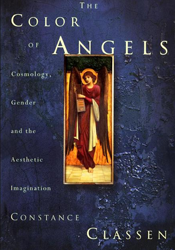
Cosmology, Gender, and the Aesthetic Imagination
Constance Classen
Constance Classen invites us to explore whether or not angels have a color, or even a scent; to imagine the senses as mystics and artists have through the centuries. From Hildegard of Bingen to modern experiments helping the blind to “see” through touch, Classen paints a fascinating tryptic of the cosmology, gender, and aesthetics of the senses. The Color of Angelsuncovers the rich sensory symbolism of the past, showing how it lingers on in modern perceptions. It describes a historical hierarchy of the senses in which the politics of gender influence the social construction of sensory meaning in different periods and domains. According to this system, the male gaze penetrates while the scent of a women permeates; masculine scholarship is contrasted with the tactility of feminine home-making. Yet even though art has often reinforced these categories, it also retains the capacity to challenge them. Symbolists and Surrealists bridge the gap between the senses, creating sweet colors and fragrant songs. Despite the gendered history of the senses, Classen concludes that the experiences of those marginalized by society–including women and the blind–can form the basis for developing a new, more vital sensory aesthetics.

